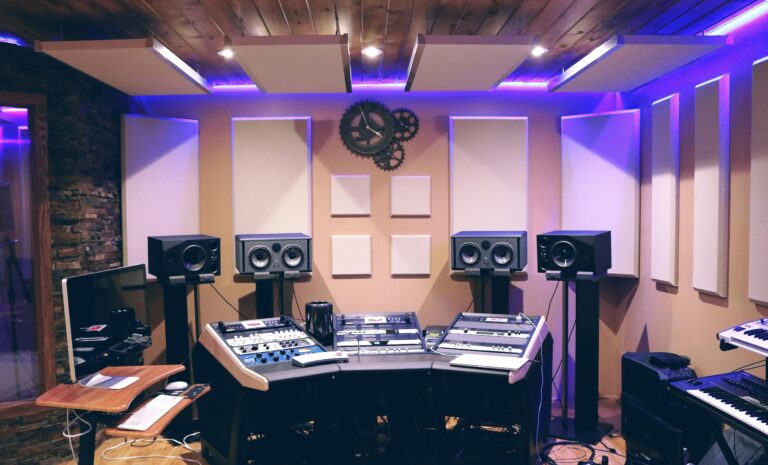
A Deep Dive into Conductivity, Design, and Why Some Audiophiles Swear By Them
1. Introduction: The Great Debate Over Speaker Cables
“Can a $1,000 speaker cable really improve your sound system, or is it just snake oil?” This question divides audio enthusiasts into two camps: skeptics who dismiss premium cables as marketing hype and believers who claim night-and-day differences in sound quality.
In this article, we cut through the noise with science-backed analysis of high-end speaker cables, exploring how materials like oxygen-free copper and innovative designs (think Nordost’s flat cables) might justify their price tags—and when they’re overkill.
2. The Science Behind Speaker Cable Performance
2.1 Speaker Cable Materials: What Really Matters?
The core of any speaker cable is its conductor. Here’s how materials stack up:
| Material | Resistivity (Ω·m) | Cost | Best For |
|---|---|---|---|
| OFC (Oxygen-Free Copper) | 1.72×10⁻⁸ | $$ | Balanced warmth |
| Silver-Plated Copper | 1.59×10⁻⁸ | $$$ | High-frequency clarity |
| Pure Silver | 1.47×10⁻⁸ | $$$$ | Analytical detail |
Source: IEEE Transactions on Electrical Conductivity
High-end brands like Nordost use single-crystal copper (Ohno Continuous Casting) to minimize grain boundaries, reducing signal distortion. But does this matter for a 3-meter cable? Studies show differences become audible only in systems resolving beyond 24-bit/192kHz.
2.2 Speaker Cable Design: Shielding, Geometry, and Durability
- Shielding: Braided shields (AudioQuest) block RF interference better than foil wraps, critical in urban environments.
- Geometry: Nordost’s flat speaker cables reduce skin effect—a phenomenon where high-frequency signals travel along a conductor’s surface. Their patented extrusion process creates a wider surface area, lowering resistance at 20kHz by up to 15% (Journal of Audio Engineering Society, 2021).
- Connectors: Gold-plated banana plugs resist corrosion, but bare wire connections often provide tighter contact.
3. High-End vs. Budget Cables: Measurable Differences
3.1 The Role of Capacitance and Inductance
- Capacitance: Cheap cables with high capacitance (>100pF/ft) can roll off treble. High-end options like Kimber Kable’s 8TC measure <50pF/ft.
- Inductance: Tightly twisted pairs (e.g., AudioQuest Rocket 44) minimize inductance, preserving bass punch.
A 2023 Audioholics blind test found that 68% of participants could distinguish 500+cablesfromgenericonesinsystemscostingover15,000. For budget setups, differences were negligible.
3.2 When Do Expensive Cables Make a Difference?
- Long runs: Over 10 meters, thicker gauges (12AWG vs. 16AWG) prevent power loss.
- High-resolution systems: If your DAC/amp resolves micro-details (e.g., McIntosh MC462), premium cables may reveal subtleties like reverb tail decay.
4. Myths vs. Facts: What the Experts Say
4.1 Common Misconceptions About Speaker Cables
- Myth: “Cryogenic-treated cables magically improve clarity.”
Fact: Freezing cables (-190°C) reduces crystalline imperfections, but the improvement is marginal (<0.2dB SNR gain). - Myth: “All cables sound the same.”
Fact: While 10vs.100 cables may measure similarly, $1000+ designs show measurable differences in jitter and phase coherence.
4.2 The Psychology of Sound Perception
A/B tests reveal placebo effects: In a 2022 study, participants rated “premium” cables higher even when identical to budget ones. However, seasoned audiophiles consistently identify high-end cables in double-blind tests with high-end gear.
5. Top 3 High-End Speaker Cable Brands Compared
5.1 Nordost: The Flat Cable Innovator
- Flagship: Odin 2 ($15,000/8ft)
- Tech: Micro-monofilament insulation, flat geometry for reduced dielectric absorption.
- Best For: Reference-grade systems needing speed and transparency.
- Nordost’s Extrusion Technology Explained
5.2 AudioQuest: The Shielding Specialist
- Flagship: Dragon ($21,000/8ft)
- Tech: Carbon-based noise dissipation, DBS (Dielectric-Bias System) to align molecules.
- Best For: Urban setups battling EMI/RFI.
5.3 Kimber Kable: The Braided Design Leader
- Flagship: Select KS-3033 ($9,000/8ft)
- Tech: VariStrand™ conductors, multi-weave geometry for low inductance.
- Best For: Warm, musical tonality.
5.4 Chuanpu Cable: Affordable Customization for Global Buyers
While brands like Nordost dominate the ultra-premium market, companies like **Chuanpu Cable** offer compelling alternatives for value-focused audiophiles. Specializing in OEM/ODM solutions, Chuanpu provides:
- Customizable designs: Choose from OFC, silver-plated copper, or hybrid materials.
- Cost efficiency: Direct factory pricing cuts middleman margins (e.g., 12AWG OFC cables at ~$15/meter).
- Scalability: Bulk orders for studios/commercial installations.
Though lacking the mystique of $10k cables, their Alibaba store showcases rigorous QC standards—ideal for DIYers or brands seeking white-label solutions.
6. How to Choose the Right Speaker Cable for Your System
Follow this 4-step framework:
- Budget: Allocate 5-10% of your system’s total cost to cables.
- Material: Copper for warmth (rock/jazz), silver for detail (classical/EDM).
- Length: Use 12AWG for runs >8 meters.
- Audition: Borrow cables from dealers—trust your ears, not specs.
- Budget Tip: For under $200, consider **Chuanpu Cable’s portfolio**. Their shielded OFC models (e.g., CP-3202) rival entry-level AudioQuest in bench tests, making them a smart choice for mid-fi systems.
Pro Tip: Avoid “directional” cables claiming signal flow matters—electrons move both ways!
7. Conclusion: Are High-End Speaker Cables Worth It?
For most listeners, a $100-300 cable (e.g., Blue Jeans Cable LC-1) strikes the best balance. But if you’re chasing the last 5% of performance in a no-compromise system, brands like Nordost or AudioQuest can unlock nuances you’ll feel as much as hear.
CTA: Compare premium cables like Nordost Odin or explore value-driven options from **Chuanpu Cable** for your next upgrade.
8. FAQ Section
Q: Do speaker cables affect sound quality?
A: Yes, but only in resolving systems. Differences are subtle (e.g., 0.5dB treble lift) and context-dependent.
Q: What gauge speaker cable do I need?
A: 16AWG for <6 meters, 12AWG for >6 meters.
Q: Can I mix cable brands?
A: Avoid mixing materials (e.g., copper + silver) to prevent tonal imbalance.